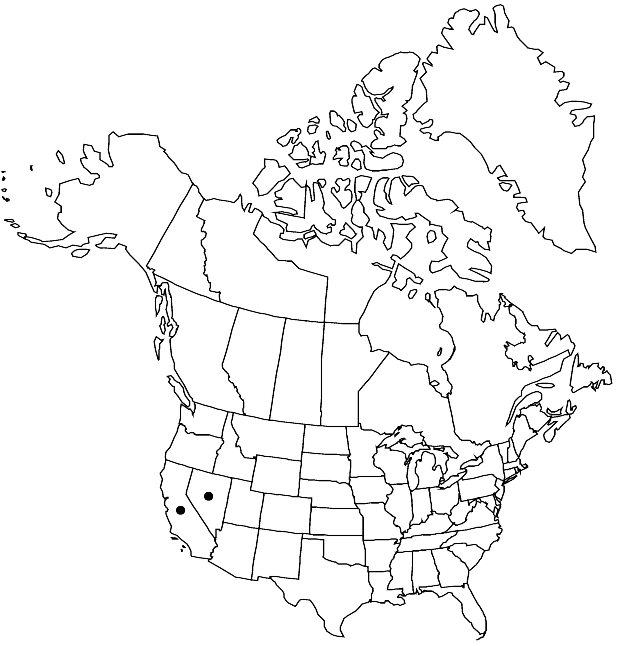Boechera elkoensis
Harvard Pap. Bot. 11: 263. 2007.
Perennials; usually long-lived; apomictic; caudex often woody. Stems 1–5 per caudex branch, arising from center or margin of rosette near ground surface, 1–3 dm, sparsely pubescent proximally, trichomes subsessile, 2–5-rayed, 0.1–0.4 mm, glabrous or sparsely pubescent distally. Basal leaves: blade narrowly oblanceolate, 2–6 mm wide, margins entire, ciliate at petiole base, trichomes (simple), to 0.4 mm, surfaces moderately pubescent, trichomes sessile or subsessile, 2–5-rayed, 0.1–0.4 mm. Cauline leaves: 3–6, not concealing stem; blade auricles absent or 0.2–0.5 mm, surfaces of distalmost leaves glabrous, or sparsely pubescent along margins. Racemes 4–11-flowered, unbranched. Fruiting pedicels erect to ascending, straight, 4–8 mm, usually glabrous, rarely sparsely pubescent, trichomes appressed, branched. Flowers erect to ascending at anthesis; sepals glabrous; petals usually lavender, rarely whitish, 4–7 × 1.2–2 mm, glabrous; pollen spheroid. Fruits erect to ascending, often appressed to rachis, not secund, straight, edges often slightly undulate (not parallel), 3–7 cm × 2–3 mm; valves glabrous; ovules 26–42 per ovary; style 0.05–0.3 mm. Seeds uniseriate, 2.5–3.5 × 1.8–2.5 mm; wing continuous, 0.4–0.9 mm wide.
Phenology: Flowering Jul.
Habitat: Gravelly soil among rocks in open forests and subalpine meadows
Elevation: 2000-3200 m
Discussion
Morphological evidence suggests that Boechera elkoensis is an apomictic species that arose through hybridization between B. platysperma and B. stricta (see M. D. Windham and I. A. Al-Shehbaz 2007 for detailed comparison).
Selected References
None.
Lower Taxa
"elongated" is not a number."thick" is not a number."dm" is not declared as a valid unit of measurement for this property.
